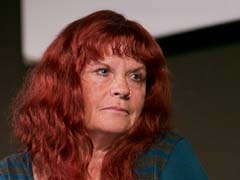Shirley Steinberg speaks about her concept of public space, analyses the way it is experienced by children and young people, and describes how it can be reclaimed through theatre and art in general.
Shared Spaces recorded this conversation with Shirley Steinberg in February 2015 when she visited the Centre of Contemporary Culture of Barcelona (CCCB) to give a lecture titled “Apprenticeship in Love”. Steinberg says that, for her, public space is a democratic space, one where “anyone can feel safe”, both in the usual sense and to the extent that it “allows for movement, sound, art, peacefulness, and also has an ability to bring people together”.
Starting out from this premise, she goes on to talk about her thesis concerning the relationship of children and young people with public space. She believes there are two spaces. “When you are small, the adult tells you, ‘Go and experiment’, but if you are a young person, you’re told, ‘You can’t come here. These spaces aren’t for you.’” Hence, a child’s relationship with public space is through an accompanying adult who guarantees she will be safe. It is a space where he is taught to behave himself, and where she achieves her early successes, like walking or riding a bicycle.
However, Steinberg says that public space is too regulated for young people and, more emphatically, at least in the United States, “Public space for young people doesn’t exist, is forbidden to youth, and seen as a group people should fear, and as revolutionary”. Accordingly, she says, they aren’t allowed to enjoy it because they are forbidden to enter some shopping malls unless accompanied by an adult, or they suffer police harassment if they’re just hanging out, and are prohibited from skating or skateboarding in the street.
On a different analytical front, Steinberg considers that “public space can be theatre’s best friend and theatre can be public space’s best friend”, in the sense that public space can be moulded at will and the improvisation of theatre can be very versatile in occupying it. She also says that children should have spaces of participation in public space through theatre, so they can experience another way of relating with it. Flashmobs, she suggests, are an example of these spaces of participation and freedom.
Finally, when choosing her favourite public space she describes an experience of mysterious connotations. While driving along a narrow road in the highlands of the north of Scotland, she came across a circle of stones in a field. It reminded her of Stonehenge but there was no sign or any information about what it was or what she was supposed to do there. It was a place where she could feel a unique engagement with the landscape and do whatever she liked in a setting of peace and freedom.



